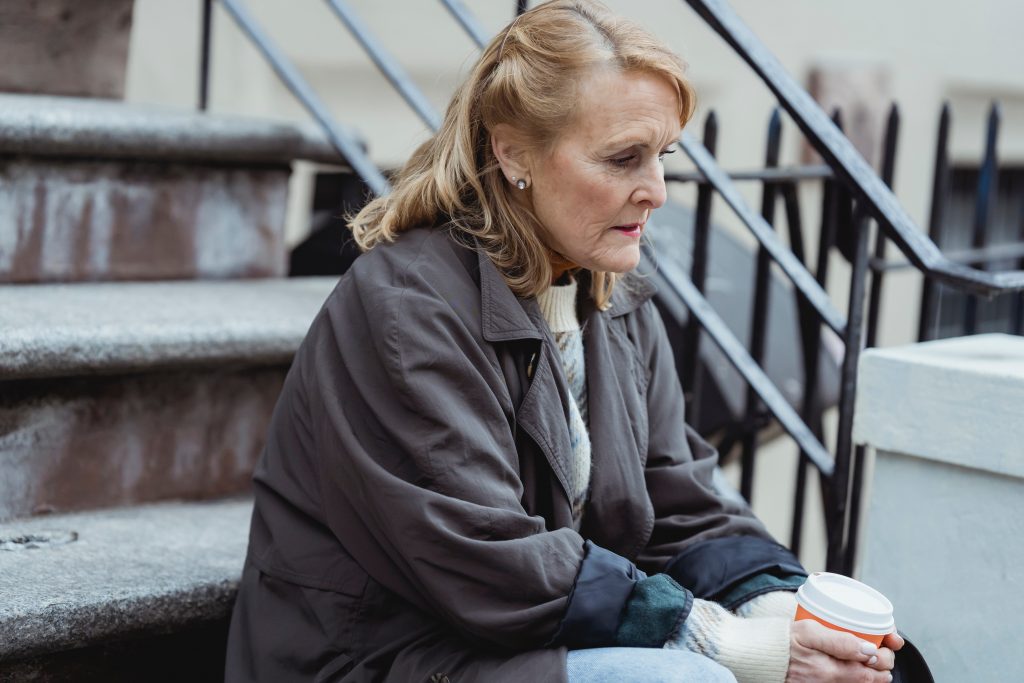Social isolation in the time of Coronavirus

For many, the Coronavirus pandemic can be summarized in one word: lonely. In early 2020, as the virus swept across country after country, people sought safety in isolation. The phrase ‘social distancing’ took hold as the World Health Organization recommended maintaining a physical distance of at least one meter. The world went virtual; life was suddenly a remote affair.
Individuals with the highest risk of serious illness from Covid-19 were the most impacted. Underlying health conditions caused some to not leave their house for months. Communities scrambled to support their most vulnerable, organizing no-contact services such as grocery drop-offs. Face-to-face interactions were avoided, hugs were absolutely off limits, and loneliness became palpable.
One of the most affected populations has been older adults. At age 80 and above, individuals are 184 times more likely to die from Covid19, according to the New York Times. Dr. Nir Barzilai, Scientific Director of the American Federation for Aging Research, found that vulnerability began increasing in adults around age 55. As a result, older adults were strongly encourage to stay home. During the peak of the pandemic, many nursing homes even closed their doors to visitors, desperately trying to protect their residents. But in mitigating the spread of Covid-19, a new crisis came into focus: the very real implications of isolation.
Loneliness among older adults
“Loneliness among older adults has become a social and public health concern with population aging and the control measures for the Coronavirus Disease 2019, such as staying at home and physical distancing,” wrote Malhotra et al. in their 2021 study, Loneliness and health expectancy among older adults. Elderly adults were suffering from loneliness long before the pandemic, however— pre-Covid-19 studies in the U.S. found an average of 25% of older adults were socially isolated and 43% reported feeling lonely. The pandemic, however, served to shine a light on the crisis, motivating scientists to study the ramifications of loneliness.

Malhotra et al.’s July study was the first comprehensive research quantifying loneliness’ impact on health expectancy. The study defined loneliness as the perceived discrepancy between one’s desired and actual social relationships. By studying adults in Singapore age 60 and up, the researchers were able to measure the correlation between participant’s perceived loneliness and their mental and physical health.
The Results
The study found participants ages 60-80 who reported feeling lonely had statistically shorter life expectancies. During their remaining years, these individuals were also more likely to be unhealthy and showed lower activity levels. These health issues linked to perceived loneliness and social isolation are both numerous and serious, according to article by Bei Wu, Co-Director of the New York University’s Aging Incubator.
“Increasing evidence demonstrates that social isolation has detrimental impact on individual’s health and well-being,” wrote Wu. Loneliness and social isolation are now linked to serious health issues such as increased blood pressure, heart disease, obesity, and poorer cognitive functioning. According to Wu, social isolation has been associated with an approximately 50% increased risk of developing dementia. It’s also been shown to increase risk of coronary heart disease by 29% and risk of strokes by 32%.
Navigating Loneliness
Loneliness is officially deadly. Yet the Coronavirus is still a real threat, especially for elderly populations. So how are older adults to navigate the two? The first step is in taking loneliness seriously. “Loneliness is often stigmatized, trivialized, or ignored, even though loneliness presents a public health challenge,” wrote Malhotra et al. Some societies, however, are stepping up to the challenge.
In 2018, the United Kingdoms established a Minister for Loneliness, launching a national strategy for tackling the crisis. This year, in 2021, Japan followed suit, appointing cabinet member Tetsushi Sakamoto to work towards preventing social isolation. And in the U.S., we’re engaging in conversations on mental health that will hopefully lead to real change.
Bei Wu’s Solutions
In the meantime, Bei Wu, also the Dean’s Professor in Global Health at NYU, has some excellent suggestions for how to protect oneself from both the virus and the loneliness of social isolation. First, she emphasized the importance of physical distance with social connection. “While each country has asked their citizens to keep social distancing,” she wrote, “this message of social distancing can be misleading.” Don’t let physical distance become emotional distance, warns Wu. Maintain your relationships even if they are six feet apart or through a screen.
Second, Wu urged the utilization of technology to address social isolation. “It is time to develop more person-centered applications with the input from older adults and their family members,” she wrote. Whether it’s a virus or failing health, technology can overcome physical barriers, enabling social engagement. Finally, Wu points to healthcare. “The health care system is well positioned to develop methods to identify social isolation and loneliness in health care settings,” she argued. “By identifying those at highest risk and whether their condition is acute or chronic, healthcare providers may be able to use these findings to develop appropriate clinical and public health interventions for patients.”
If you or someone you love is suffering from loneliness, check out these resources from Social Work License Map or check out Wu’s organization, The Aging Incubator. And remember, if you’re feeling lonely, you’re in good company.
